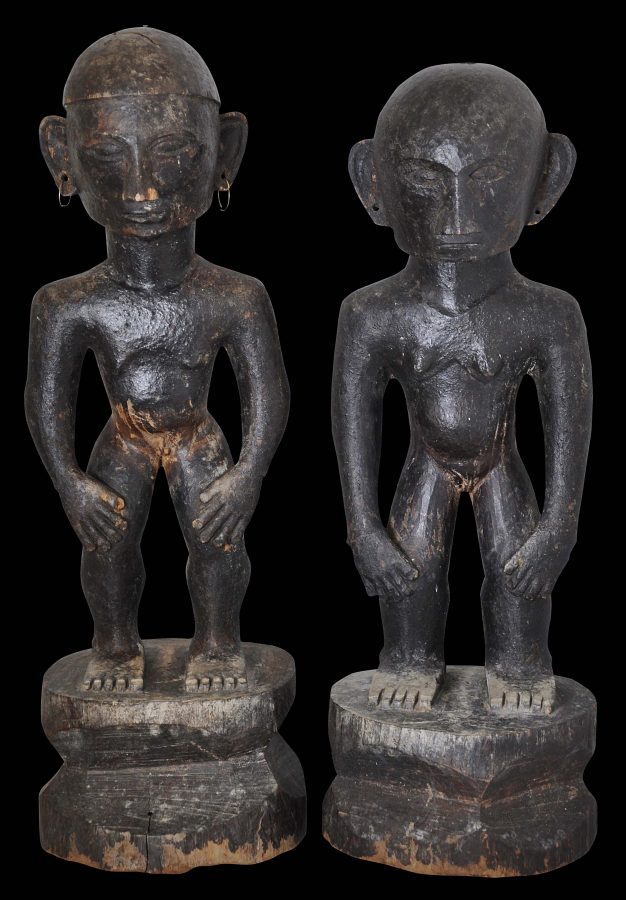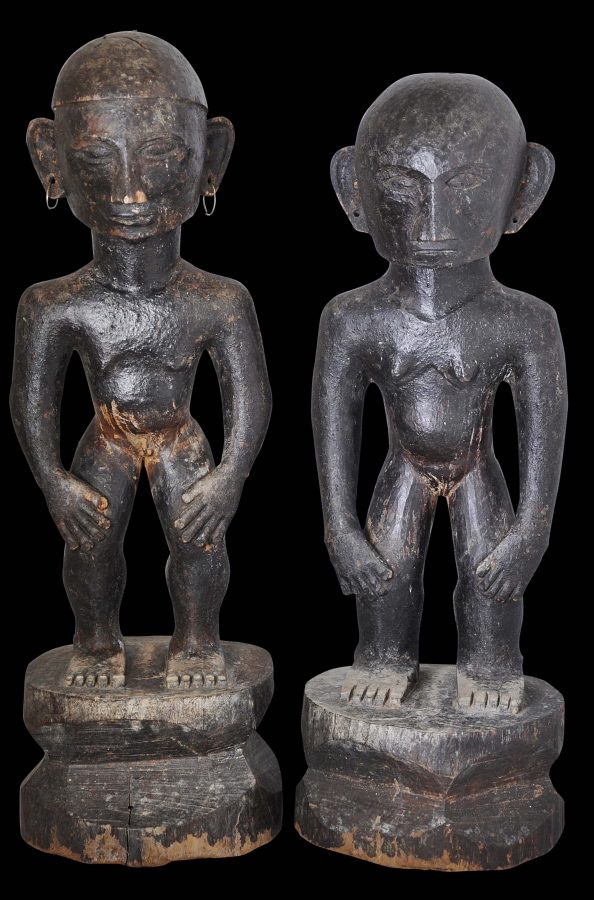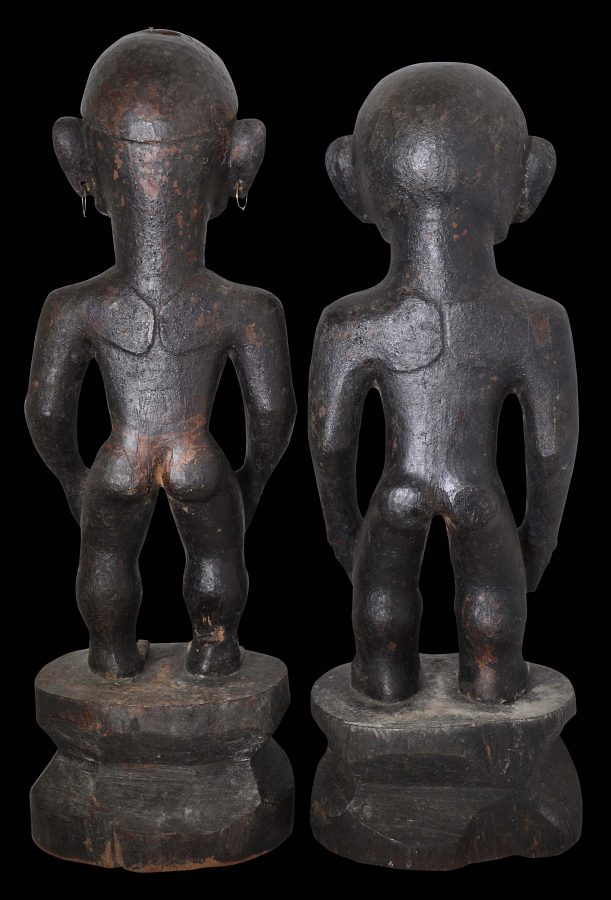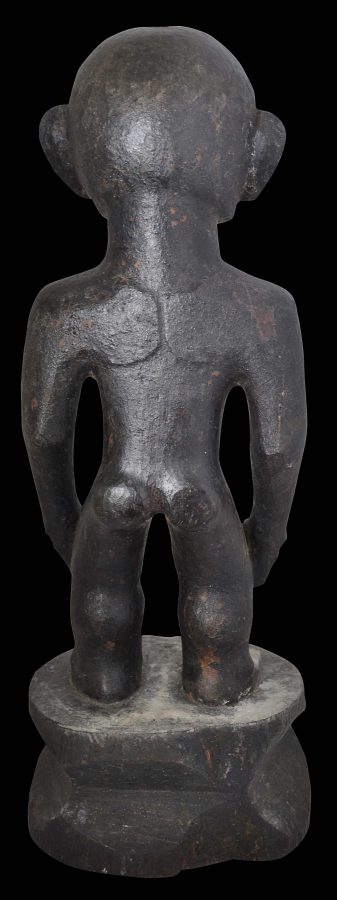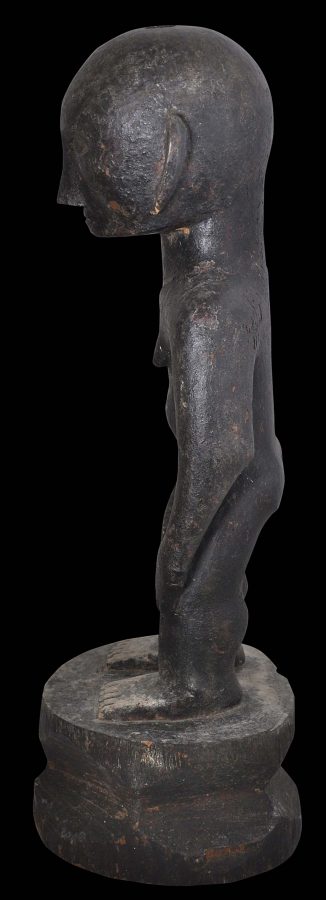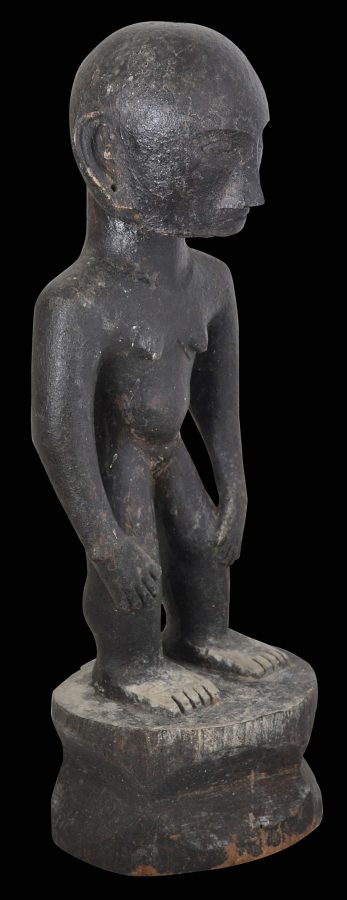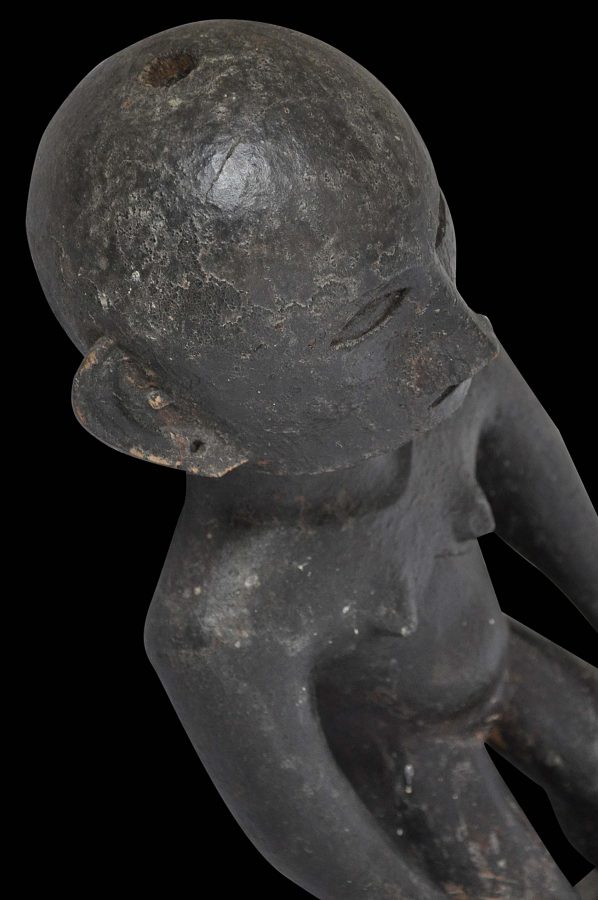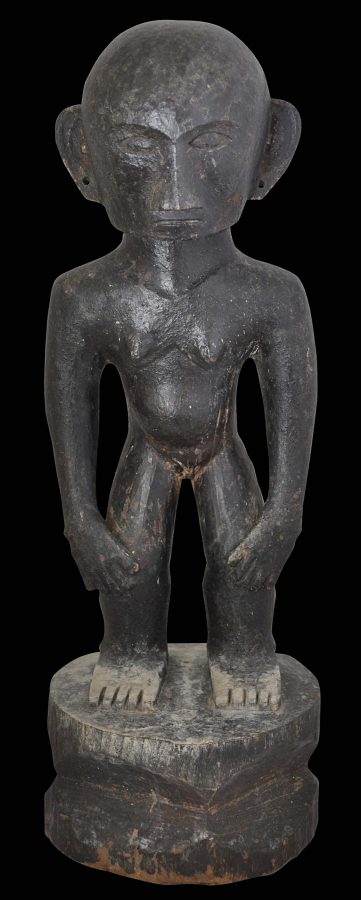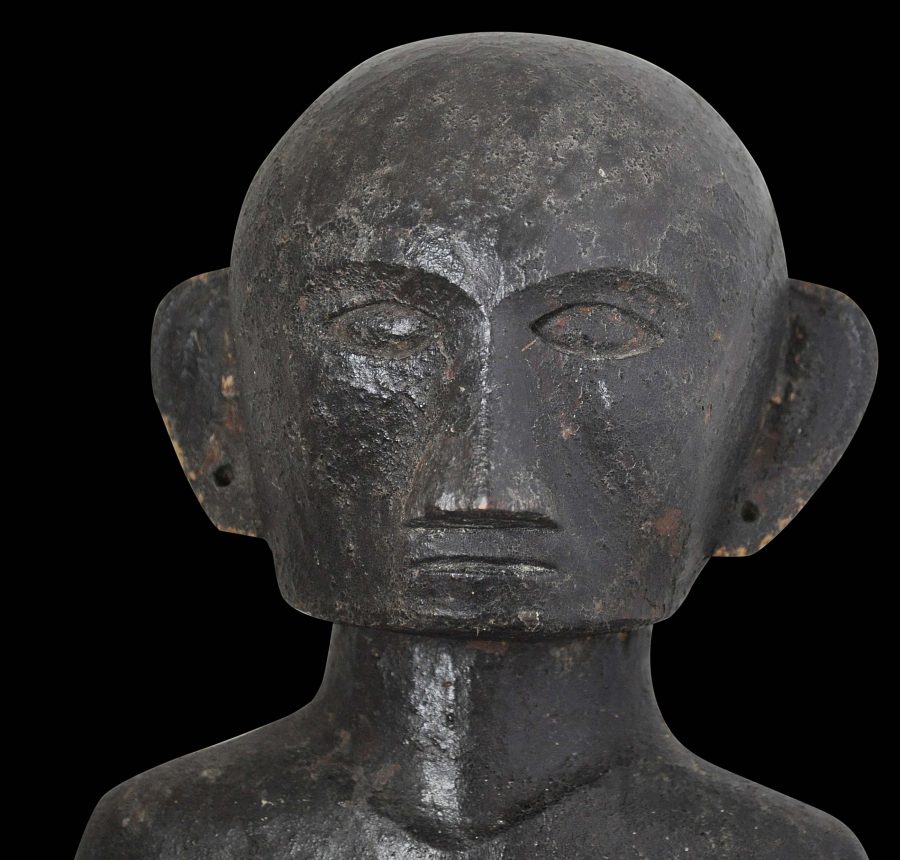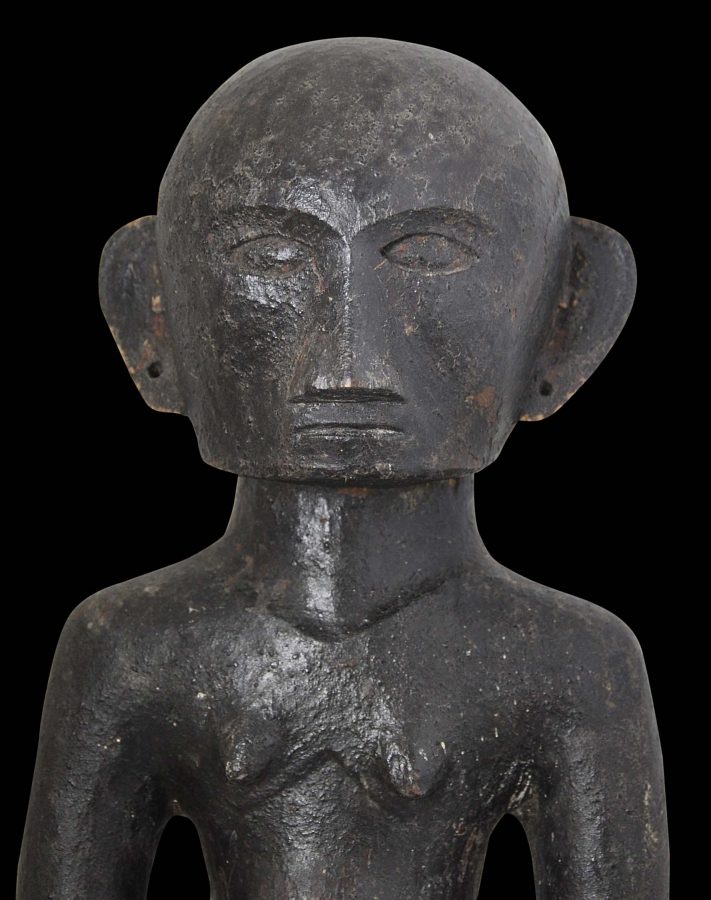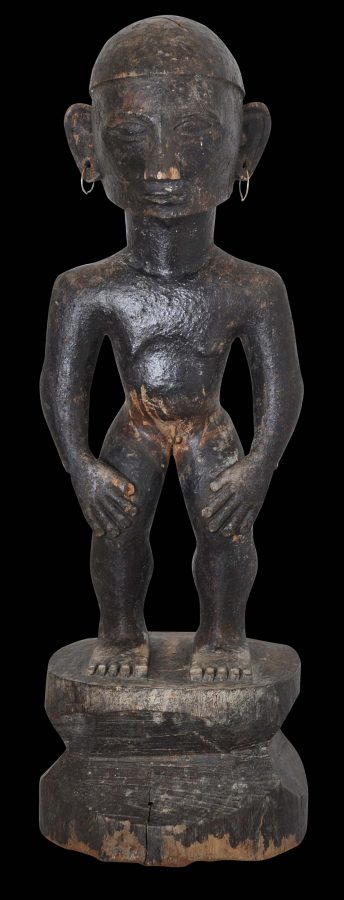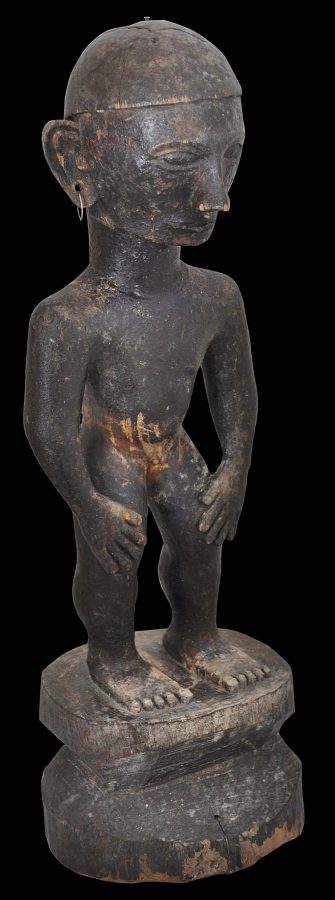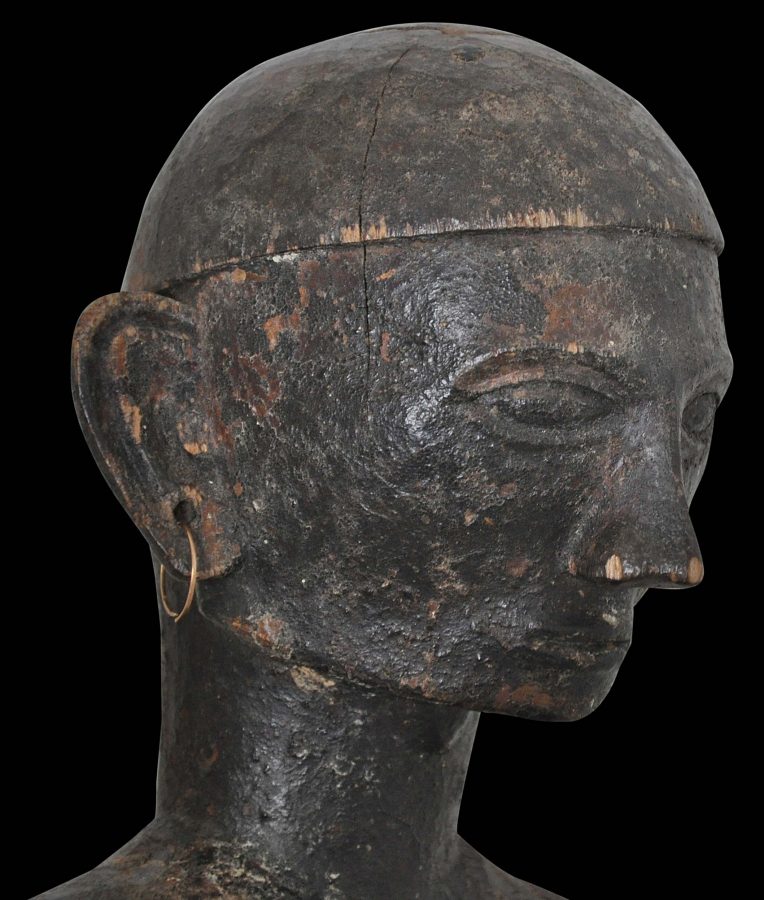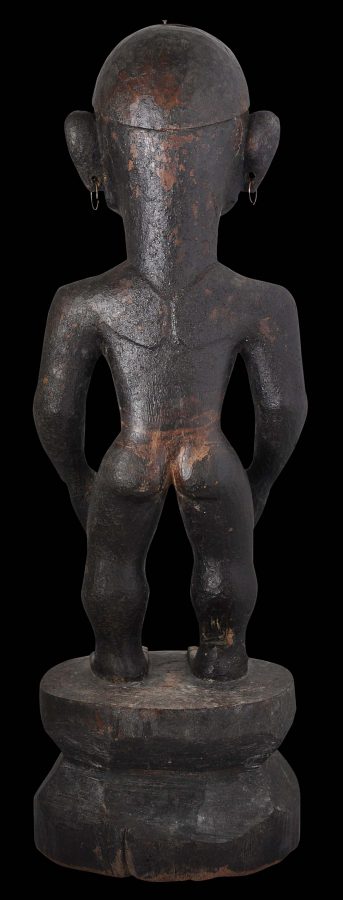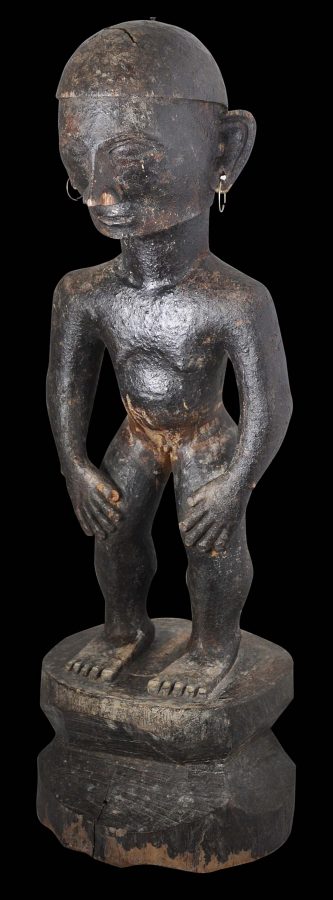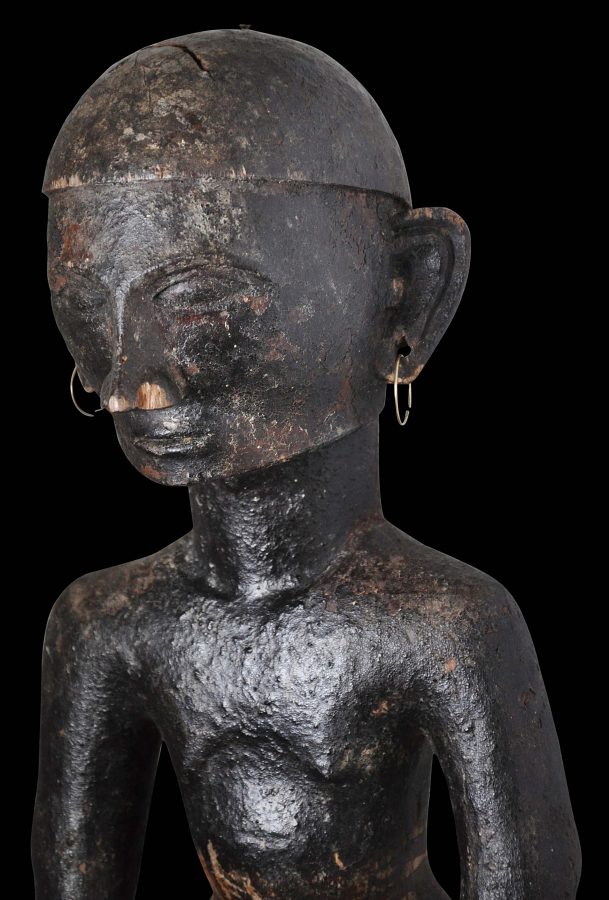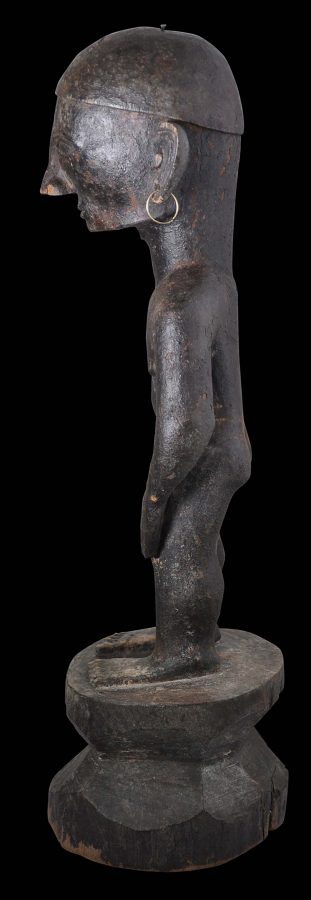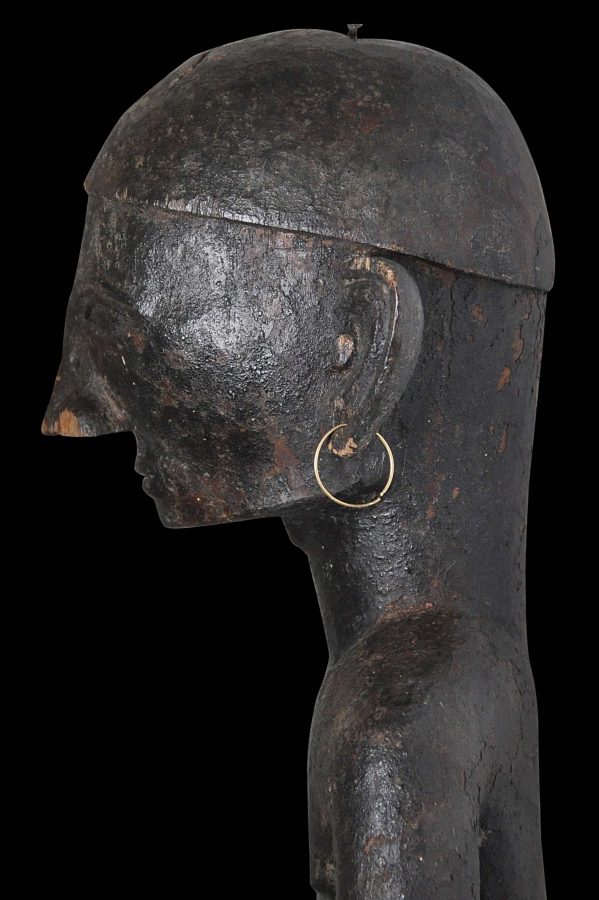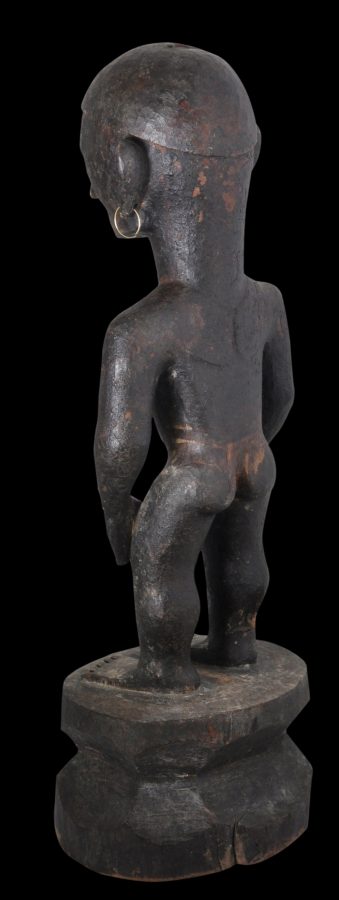This superb pair of powerfully-built standing bulul figures is notable because it is a true pair but also because of the quality of the carving. Both are finely rendered with clear features. The pair also has an excellent encrusted patina consistent with significant age and appropriate ritual use.
Such figures were carved by the Ifugao as protective figures to be installed in their rice fields and rice granaries to protect the rice crop and harvest from evil spirits. The figures are highly stylised representations of ancestor-associated rice gods, and were believed to attract the presence and thus power of ancestral rice god spirits. Bululs were handed down to the first child of a family. Usually, they were carved as pairs, one male and female, but typically the two become separated.
Each has been carved in the Hapao style from a single piece of wood (narra wood –Pterocarpus indicus, a non-CITES listed species) and with an economy of means. Each has been carved with a slightly over-sized head; a prominent jawline and nose; broad, pierced ears; almond-shaped eyes; elongated arms, thick legs; well-carved behinds; and well-defined toes and fingers. Both stand on waisted or hour-glass platforms.
Both have minute genitalia indicating their sex. (The small sizes of the genitalia are authenticating features; later examples done for the tourist trade tend to have exaggerated features.) The male figure also has been carved with the suggestion of a tight-fitting hat. He also wears earrings of thin gold wire.
They are both serene and brooding; poised rather than stiff – they are masterpieces of minimalism. They have been carved via numerous small chips rather than big blows, allowing the carver greater control and precision.
The encrusted patina is likely the result of the blood of sacrificial pigs and chickens having been coursed over the images that has blended with and aged over their surfaces. Regular ceremonies presided over by the village priest were held throughout each stage of the rice production process, leading to regular handling and offerings being made to the statues. Other than blood, the images were also offered rice cakes and jars of rice wine.
The pair here is in an excellent, stable condition. There is only minor chipping to the extremities, as might be expected. They are well carved, with excellent patina and are of museum quality.
References
Afable, P., et al, Philippines: an Archipelago of Exchange, ACTES SUD/ Musee du Quai Branly, 2013.
Casal, G. et al, The People and Art of the Philippines, UCLA Museum of Cultural History, 1981.
Kurer, M. & A. Maculangan, ‘Simple and Powerful: Expression in Cordillera Traditional Art’, in Arts of Asia, January-February 2017.
Maxwell, R., Life, Death & Magic: 2000 Years of Southeast Asian Ancestral Art, National Gallery of Australia, 2010.
Moltzau Anderson, E., In the Shape of Tradition: Indigenous Art of the Northern Philippines, C. Zwartenkot Art Books, 2010.


